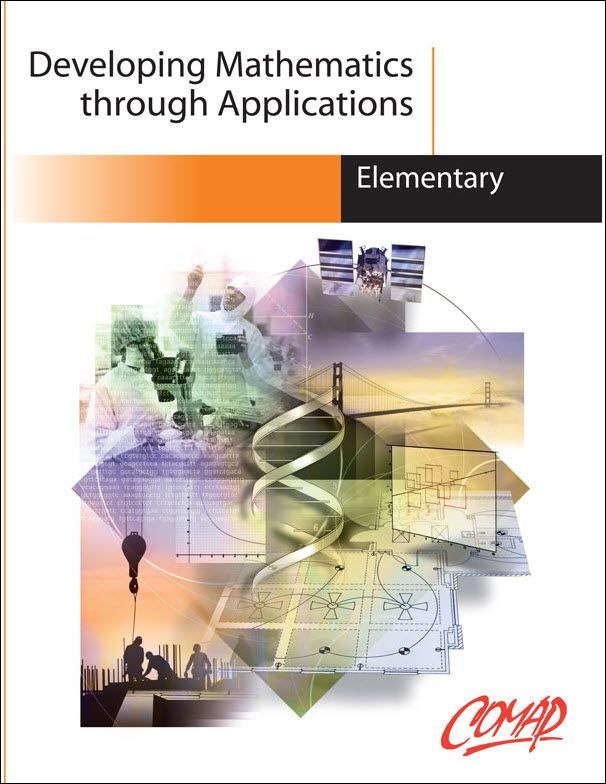Chapter 2: Linear Models: Instructor Resources Developing Mathematics through Applications: Elementary (DevMAP)
Author: Nancy Crisler and Gary Simundza
Book/Course 1: Developing Mathematics through Applications: Elementary
Chapter 2 Linear Models
Chapter 2Preparation Reading
Section 2.1Measuring Indirectly
Section 2.2Exploring Algebraic Expressions
Section 2.3Solving Linear Equations
Section 2.4Functions and Their Representations
Section 2.5Linear Functions
Section 2.6Creating Linear Models
Chapter 2Summary/Review
To the Student
This book is different from mathematics textbooks you have used before. We believe that mathematics should be learned by seeing how it is used day to day. The reason for learning the mathematics presented here is not simply to prepare you for the next math course but to prepare you for your next job and for using mathematics to solve problems that arise in other areas of your life. Yes, the mathematics that you learn will help prepare you for further schoolwork. But it is also important as a life skill, something you will use and value.
This book encourages active exploration of mathematics. You will learn to construct a variety of mathematical explanations of real problems. To do this, you will use equations, graphs, tables, verbal descriptions, geometry, and statistics. Here are a few tips that will help you use this book successfully:
- Much of the mathematical exploration should occur in small groups. Every chapter of the book includes Activities or Discoveries, which will most likely be done during class time. Discussions with other students will help you grasp new mathematical concepts.
- You will have to read carefully in order to understand the connections between mathematics and the workplace. This is especially important in some of the exercises.
- Many of the Activities, Discoveries, and Exercises require written responses. Try to write clearly and in complete sentences in order to show your understanding of the mathematics.
- When appropriate, use a graphing calculator or computer.
- Each section begins with What You Need to Know. This is a list of prerequisite skills that should be familiar from earlier mathematics courses.
- What You Will Learn lists the new mathematics you will study in the section.
- There are three types of exercises at the end of most sections:
- Investigations are “thinking” exercises that will test your understanding and challenge you to apply the mathematics you have just learned. Some investigations will present new mathematics topics that build on the work of the section.
- Projects and Group Activities involve experiments or research, many of which are intended to be done in small groups.
- Additional Practice exercises allow you to master the computational skills introduced in the section.
In order to use mathematics to describe the world around you, you need to see how mathematics is part of that world. Our goal is that, by the end of the text, you will be able to recognize certain mathematical principles when you are outside the classroom. We hope that you enjoy using this text to develop your mathematical skills and understanding as much as we enjoyed writing it.
Chapter Organization
Understanding Chapter-Spanning Components
The chapters of Developing Mathematics through Applications: Elementary and of Developing Mathematics through Applications: Intermediate share the following major attributes:
- Goals of the Chapter: The first element of every chapter is a list of goals to be accomplished by learning the material presented.
- Preparation Reading: Each chapter begins with a brief introduction that sets the stage for the mathematics to come, and may include contextual connections or discussions of modeling aspects.
- Chapter Review: This component summarizes the key concepts of the chapter and contains a sampling of exercises from each section.
- Glossary: Each chapter concludes with a summary of the new terms introduced in the chapter. Understanding Section-Specific Components Each chapter is divided into four to six sections sharing similar pedagogical elements. The various sections serve different purposes and build on each other, incorporating the following tools:
- What You Need to Know and What You Will Learn: Each section starts with two lists. The first states the prerequisite knowledge and the second defines the mathematical objectives to be learned.
- Activities: The first section of each chapter contains an "Activity" that requires students to work in groups and perform an experiment or otherwise collect data. Students are then guided through the exploration of a core mathematical concept that will recur throughout the chapter.
- Discoveries: Later sections frequently contain explorations that are similar to the "Activity" components in that they are intended to be done in groups. A "Discovery" is usually a more focused examination of a single mathematical topic and does not necessarily involve active experimentation. If data are needed, they are often provided rather than collected.
- Examples: Numerous examples with detailed solutions are provided in the body of each section.
- Exercises: The exercise sets consist of the following types of problems:
- Investigations are adjuncts to each section and may present new material. Some are indepth examinations of particular subtopics or applications, and some are guided explorations similar to "Discoveries." Investigations provide opportunities for instructors to customize the text for their own purposes and students’ needs.
- Projects and Group Activities are similar to the "Activities" that begin each chapter. They require students to work cooperatively and often involve research or experimentation of some sort.
- Additional Practice problems provide required skill practice, including some contextual problems. They are not necessarily in order from easy to difficult, partly so that students will not quit after trying a few easy problems.

Mathematics Topics:
Application Areas:
Prerequisites:
You must have a Full Membership to download this resource.
If you're already a member, login here.